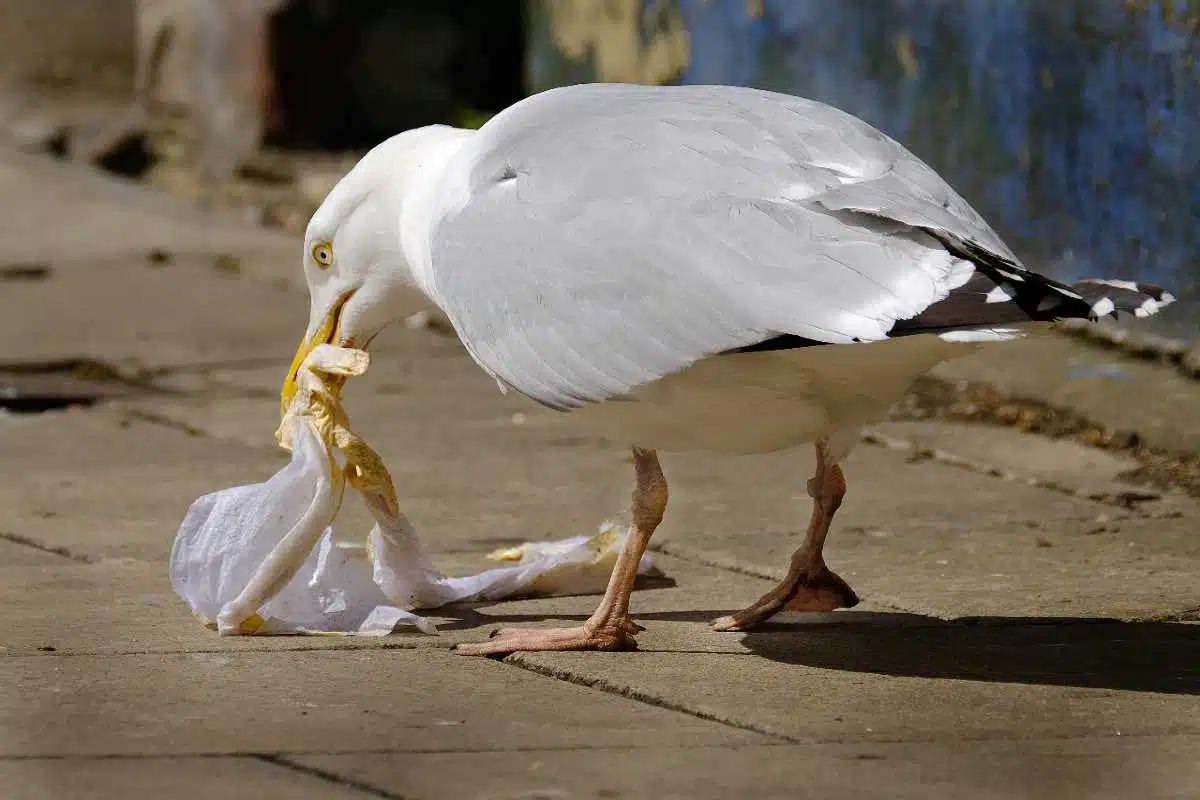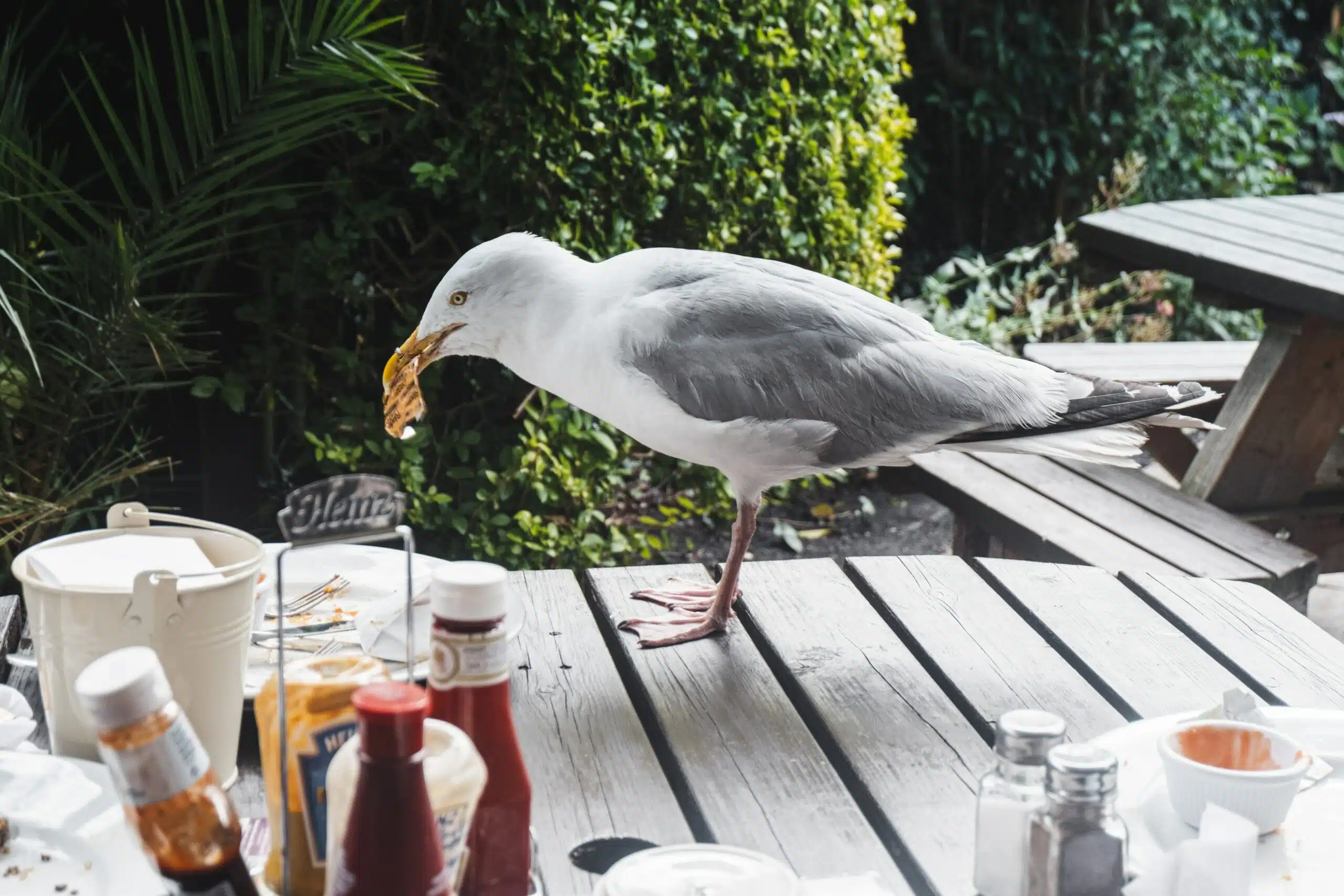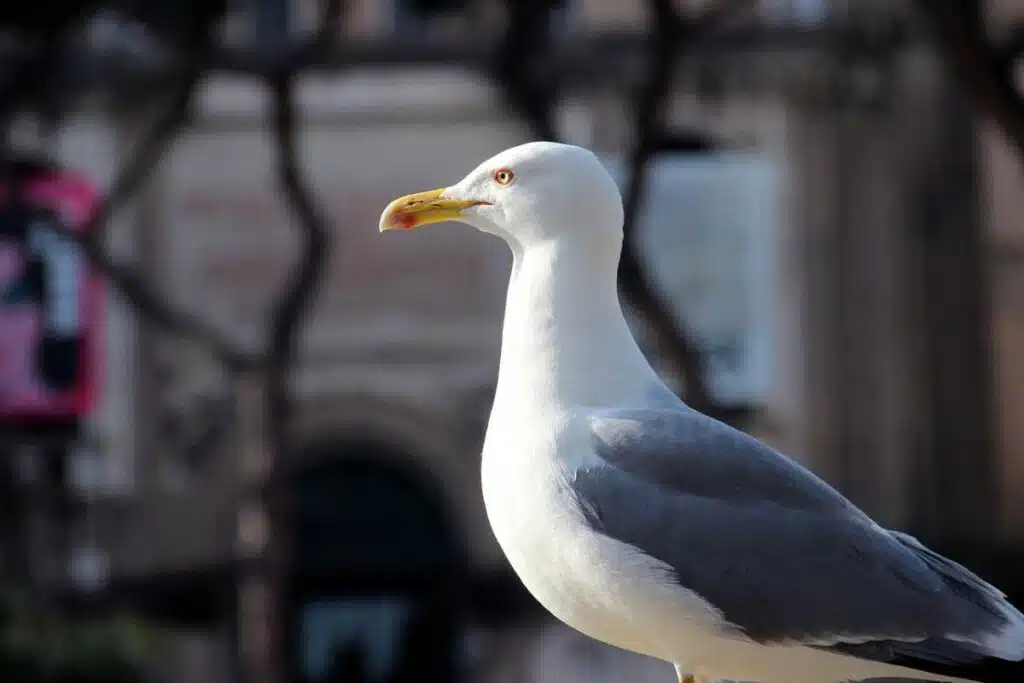LONDON PEST CONTROL AVAILABLE 24/7
LONDON PEST CONTROL AVAILABLE 24/7
When you live or work in an area frequented by more than its fair share of seagulls it is hard to stop them from ‘invading’ your building, nesting, and instilling a combination of fear and irritation with their swooping and loud calling. We hope the following tips prove helpful if you are experiencing problems and need to get rid of seagulls. Please do not hesitate to contact our seagull control professionals for advice.
Whilst there are several species of gulls, the one you are most likely to see – at the seaside and increasingly in urban areas, is the herring gull. It is a large, imposing and very intelligent bird with pale grey upperparts and pink legs. In summer months they have a white head which develops a dark grey streak in the winter months.
Yes seagulls are a protected species.
Please note that whilst it’s now accepted that seagulls can be a real menace in London and indeed in any town, they are a legally protected bird. Urban gulls are protected under the Wildlife & Countryside Act 1981. This means that culling can only be undertaken where there is a threat to public health and safety or to aircraft.
There can be several reasons for this including:
Seagulls can cause vast amounts of damage to your property. This includes:
Seagulls are attracted to buildings that offer a potential food source as well as plentiful areas to nest. What can you do?
Talk to your neighbours! If you are based on a business park or have just a few neighbours, they could be exacerbating the problem by leaving out food for the birds on bird feeders in communal areas. Whilst this is laudable, it extends a welcome sign to seagulls. They are brazen birds and will not hesitate to take the food from the feeders and scavenge nearby bins that staff use to dispose of lunch break leftovers.
Seagulls will now attack people when they are eating outdoors in a bid to take the food they are eating! If your neighbours (and indeed you) are providing outdoor spaces for staff to take lunch breaks etc talk to the business owner about the importance of staff either taking their food waste or ideally providing indoor/outdoor tamperproof bins. Find out the extent of this problem because the likelihood is that your neighbours will want to become involved because they are likely to be experiencing the same problems as you.
Seagulls are attracted to the area surrounding your business because they provide food from several sources. So, ensure outside bins including compost and food waste are not advertising food scraps because seagulls will find these and will return. As mentioned earlier, tamper proof lids and regularly inspecting areas for food items/spillages is important in keeping seagulls at bay.
If you want to encourage garden birds you may have to stop feeding them because seagulls will wait underneath the feeders for the leftovers that fall from them. Or invest in feeders that don’t shed leftovers. But don’t be surprised to see seagulls on these smaller feeders. They are aggressive and tenacious.
Remove water sources in the area surrounding your business – including fixing any outdoor dripping taps.
Ensure visitors/contractors realise the importance of cleaning up after themselves. When the sun comes out it is a rallying cry for all of us to camp outside. It’s tempting to leave the clearing away until later but don’t. Seagulls will feed on the leftovers. In fact, seagulls actually prefer food that has already been touched by humans rather than finding fresh food.
Clean up seagull fouling. It attracts other seagulls. Seagull fouling is unpleasant and can cause a range of health problems if handled haphazardly by a person or the dry particles are ingested. If the fouling on outside areas of your business does not seem excessive you can clean the area but ensure that the person responsible wears adequate PPE including a mask that covers the nose and safety glasses.
A high-pressure spray using a commercial grade disinfectant should work for small areas of moderate fouling. Ensure there are no pets nearby whilst cleaning is underway and corden off the area for obvious health and safety reasons.
Have your roof space checked and repaired– seagulls can enter your loft space via broken or missing tiles. Are you aware of the condition of your roof? Fix any damage you may find as quickly as possible.
Have the solar panels inspected. A growing number of businesses now have roof sited solar panels. Seagulls will find safe spaces on the roof under solar panels so they should be inspected, and any fouling cleaned as this attracts seagulls. Always ask a professional to clean these high-risk areas. The person may need to be qualified to IRATA standards and will use appropriate abseiling equipment and personal safety wear.
People often ask whether feeding seagulls baking soda works as a deterrent. Not only is this a myth but it also very inhumane to the bird. This can lead to the seagull becoming ill such as bloating.
There are also rumours that a seagull can explode if given baking soda. This is also not true but they should not be given baking soda under any circumstance.
Unfortunately, DIY removal methods which can include installing nets and fixing spikes to ledges do not usually work. This is usually attributed to inexperience on the part of the installer and inferior quality products. However, you can play an important part in reducing your seagull problem. Concentrate on removing the food sources mentioned earlier because this will reduce the number of seagulls in the space surrounding your business and on any balcony areas.
If you can remove sources of food and water and, after several repeat visits this remains so, they are likely to go elsewhere. What you’re not able to get rid of however, are the seagulls nesting in your roof eaves, in loft spaces and on window ledges. That’s because seagulls have made these areas their home. And when one seagull does this, others will follow their cry.
Don’t compromise your safety and the safety of team members including caretaking and janitorial staff when going down the DIY route. For example. investigating roof voids, the eaves of your building etc to examine where seagulls are roosting, nesting, (even dying when injured), should only be undertaken by a professional.
If you do consider the DIY route for getting rid of pigeons humanely from your property once they become familiar with a DIY deterrent they are likely to return. This could lead to you undertaking a lot of work for very little to show for it in the end.
This can be the most unpleasant part of a DIY approach. When surveying a business with a seagull problem it is not uncommon for our technicians to find several dead or dying seagulls in the roof spaces. Injured or ill birds seek dark spaces in which to hide.
You must remove any seagulls as soon as you find them. Failure to do so will lead to unpleasant smells and an infestation of flies. Please talk to your local council about permitted ways to dispose of dead seagulls as it will vary.
The method(s) we use to remove seagulls without harming them from a business property vary based on several factors, the most important one being the extent of the seagull problem – how long they have been using your business to roost, nest and find food and, the damage they have caused. Here we provide the most common methods for deterring seagulls.
Netting excludes seagulls from large open areas and is vital in protecting equipment such as air conditioning units and protecting fire escape areas and balconies where the seagull problem is extensive. But it is important that bird netting is professionally installed because seagulls will take advantage of a poorly hung net. Our team are often called upon to repair or replace nets that have been shoddily installed.
Our experts install netting under bridges to prevent seagulls from nesting in the support structure; under eaves; in loft areas; around parapets and many other areas as they can be fitted horizontally and vertically. The nets we supply, and install come in various mesh sizes to suit the species of problem bird.
We also install the Bird-Scape® netting system. Seagulls will disappear whilst netting is being installed but when in situ; they may reappear trapped behind the net. This system enables them to safely escape from the netting. Seagulls will fly out through the Bird-Scape but cannot get back in.
Fitted properly, netting will keep out even the most persistent birds and will last for many years.
While it can be used on almost any building, a sprung wire system is the proofing of choice for businesses where it is desirable to preserve the visual aesthetics of a building. It is more discreet than netting. The stainless-steel wire is tensioned on springs so that seagulls attempting to land are pushed off. Wires are a cost- effective method of bird proofing as they are long lasting. For example, some buildings in London have wire systems installed by our team 20 years ago.
Minor damage is inexpensive and straightforward to repair. Our team can even install wires where access is required by people as the wires will simply spring back if walked on. However, they must be professionally installed.
Bird spikes are effective in deterring seagulls and are commonly used on parapet walls, ledges, roof lines, windowsills, and other narrow surfaces that seagulls land on. We install different grades and size of spikes, the choice of which will depend on the extent of your pest bird problem and the aesthetics of your building.
Fire Gel is a humane and highly effective seagull treatment.
Extensively tested worldwide Fire Gel has been approved by the RSPB and the Health and Safety Executive. It’s invaluable in situations where it’s not possible to use traditional bird spikes and netting. For example, when health and safety legislation would be contravened, or the aesthetics of the building require a more subtle treatment regime. When professionally applied by a specialist each treatment lasts for over 2 years before it needs replacing. It is waterproof and will withstand any temperature without deterioration.
The product appears as an orange gel to humans but to seagulls that see ultraviolet light it resembles flames and so deters them from landing on their favourite buildings. The non-toxic combination of herbal oils within the product makes it abhorrent to a bird’s sense of smell and taste. It produces a stinging sensation (comparable to stinging nettles on humans) causing only minor discomfort until the effects wear off. The active ingredients are food grade natural oils making it safe to use around food manufacturing plants or anywhere biocides might cause problems. It can be used on sills, roofs, ledges – most parts of your business.
Electrified shock track systems are another discreet ledge and roof top system. They are an alternative to bird spikes and are effective in deterring all species of birds.
Seagulls and other nuisance birds often come back to the same area even after an intensive clean. A bird of prey released at random intervals, combined with other treatments can ensure that your premises remain free of seagulls.
These are audio systems that mimic the nuisance bird in distress so that the flock is under the impression that a predator has caught one of them. They can also mimic the sound of a predator and will scare the pest birds into flight. The systems we use are considerate of the environment because they are played at a natural volume.
Please get in touch with us if you would like professional advice and guidance on how to get rid of seagulls from your property.





